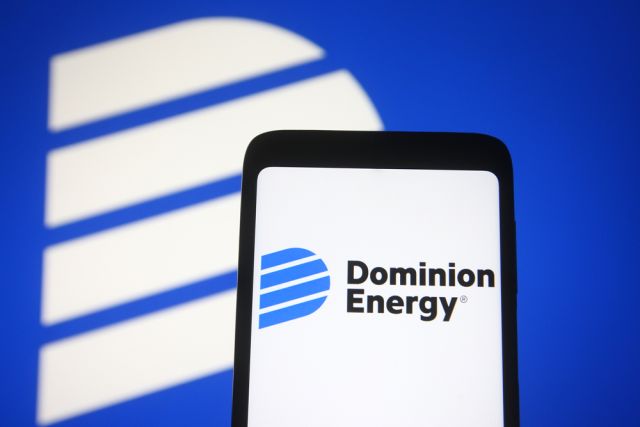
Dominion Energy CEO Bob Blue said the company has connected 94 data centers with more than 4 gigawatts (GW) of capacity in about the past five years. (Source: Shutterstock)
Big Tech’s seemingly insatiable appetite for power to fuel data centers is driving demand for more renewable energy.
Virginia-based utility Dominion Energy and Arizona-based First Solar, the largest solar panel manufacturer in the U.S., were among the companies that singled out growing power demand from tech companies with renewable energy commitments. The topic surfaced during first-quarter 2024 earnings discussions with analysts.
Dominion Energy CEO Bob Blue said the company has connected 94 data centers with more than 4 gigawatts (GW) of capacity in about the past five years.
“We expect to connect an additional 15 data centers in 2024. Northern Virginia leads the world in data center markets,” Blue said. “In recent years, this growth has accelerated in orders of magnitude, driven by, one, number of data centers requesting to be connected to our system; two, the size of each facility; and three, the acceleration of each facility’s ramp schedule to reach full capacity.”
A single data center typically demands 30 megawatts (MW) of power, Blue said. However, the company is now getting demand requests for more than double and triple that amount, he said.
“It hasn't stopped there. We get regular requests to support larger data center campuses that include multiple buildings and require total capacity ranging from 300 megawatts to as many as several gigawatts,” Blue added.
Data centers house computing infrastructure, applications and data. The computer warehouses, driven by increased use of artificial intelligence, consume massive amounts of electricity for computing power and for cooling systems.
First Solar CFO Alex Bradley said the company is seeing meaningful increases in demand expectations driven in part by data center load growth.
“According to McKinsey, U.S. data center power consumption is expected to reach 35 gigawatts annually by 2030, and much of this growth is supplied by renewable energy given that hyperscalers like Apple, Google, Meta and Microsoft are committed to 24/7 use of carbon-free energy,” Bradley said on the company’s latest earnings call. “We believe that First Solar is strongly positioned to supply this emerging sector given our advantaged technology and more sustainable product.”
$23 billion backlog
First Solar reported it sees total potential booking opportunities of more than 72 GW, up about 6 GW from the previous quarter. Nearly 60% of that is in North America. Its mid- to late-pipeline includes 3.7 GW of opportunities.
The company ended 2023 with a contracted backlog that totaled 78.3 GW. The backlog has an aggregate value of $23.3 billion, according to Bradley.
Though Bradley couldn’t immediately estimate the percentage of data center-driven corporates First Solar serves when asked by an analyst, he did say tech companies value certainty more than the utility and are concerned about reliability of products, where they come from and slave labor.
“We tend to be the first port of call for many of these companies or the developers who are doing the work for them. … They’ve a preference to buy or work with the solar products, especially for U.S.-based demand,” Bradley said.
To help meet growing demand, Blue said Dominion is taking steps to ensure its system remains resilient and reliable. That includes accelerating plans for new 500 kV transmission lines and other infrastructure in Northern Virginia. The plans remain on track, Blue said.
Virginia is home to about 315 data centers, according to the Data Center Map. The state’s Loudoun County has been dubbed “Data Center Alley.” According to the Loudon Virginia Economic Development, the area has more than 25 million sq ft of data centers in operation and millions more are in the works.
Dominion has provided electricity for data center customers for about 15-plus years. The company is currently looking into alternative rate designs and discussing potential structures with them, Blue said, without giving specifics.
Behind-the-meter solutions might make sense for some customers, he added; however, most will want access the broader network of resources in front of the meter given needs for reliability and affordability.
“Fundamentally, given our long history with data center customers, we’re quite confident in our ability to find solutions that work for them, for other customers, and for our shareholders,” Blue said.
Recommended Reading
ONEOK, MPLX’s ‘Wellhead-to-Water’ Deal Dominates Permian NGL Race
2025-04-10 - The $1.75 billion ONEOK-MPLX deal reflects how midstream companies are going big in the petrochemicals sector.
WhiteWater-Led NatGas Pipeline Traverse Reaches FID
2025-04-07 - The Traverse natural gas pipeline JV project will give owners optionality along the Gulf Coast.
Williams Commissions Two NatGas Projects to Expand Transco Network
2025-04-01 - Midstream company Williams Cos. added to its network capacity in the southern U.S. with the commissioning of the Southeast Energy Connector and the Texas to Louisiana Energy Pathway.
Boardwalk Project to Grow Southern Access for Appalachian NatGas
2025-04-02 - Midstream company Boardwalk Pipeline is holding an open season for future new capacity on the Texas Gas Transmission pipeline.
Energy Transfer Requests More Time to Build Lake Charles LNG Plant
2025-04-15 - Lake Charles LNG project was impacted by the Biden administration's refusal to grant an extension to Energy Transfer's license to export to countries other than those that have free trade agreements with the U.S.
Comments
Add new comment
This conversation is moderated according to Hart Energy community rules. Please read the rules before joining the discussion. If you’re experiencing any technical problems, please contact our customer care team.





